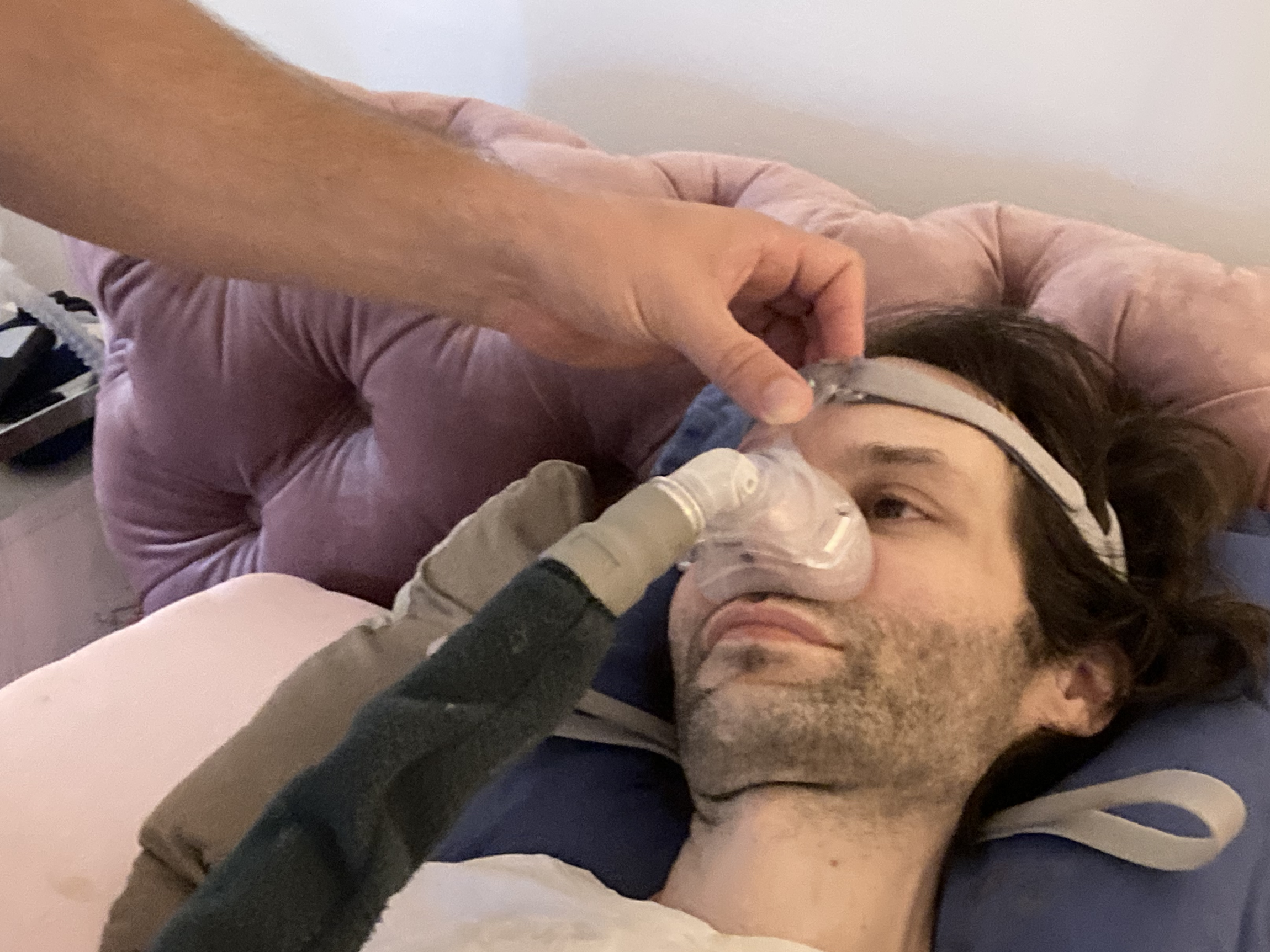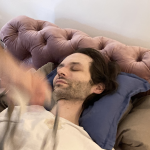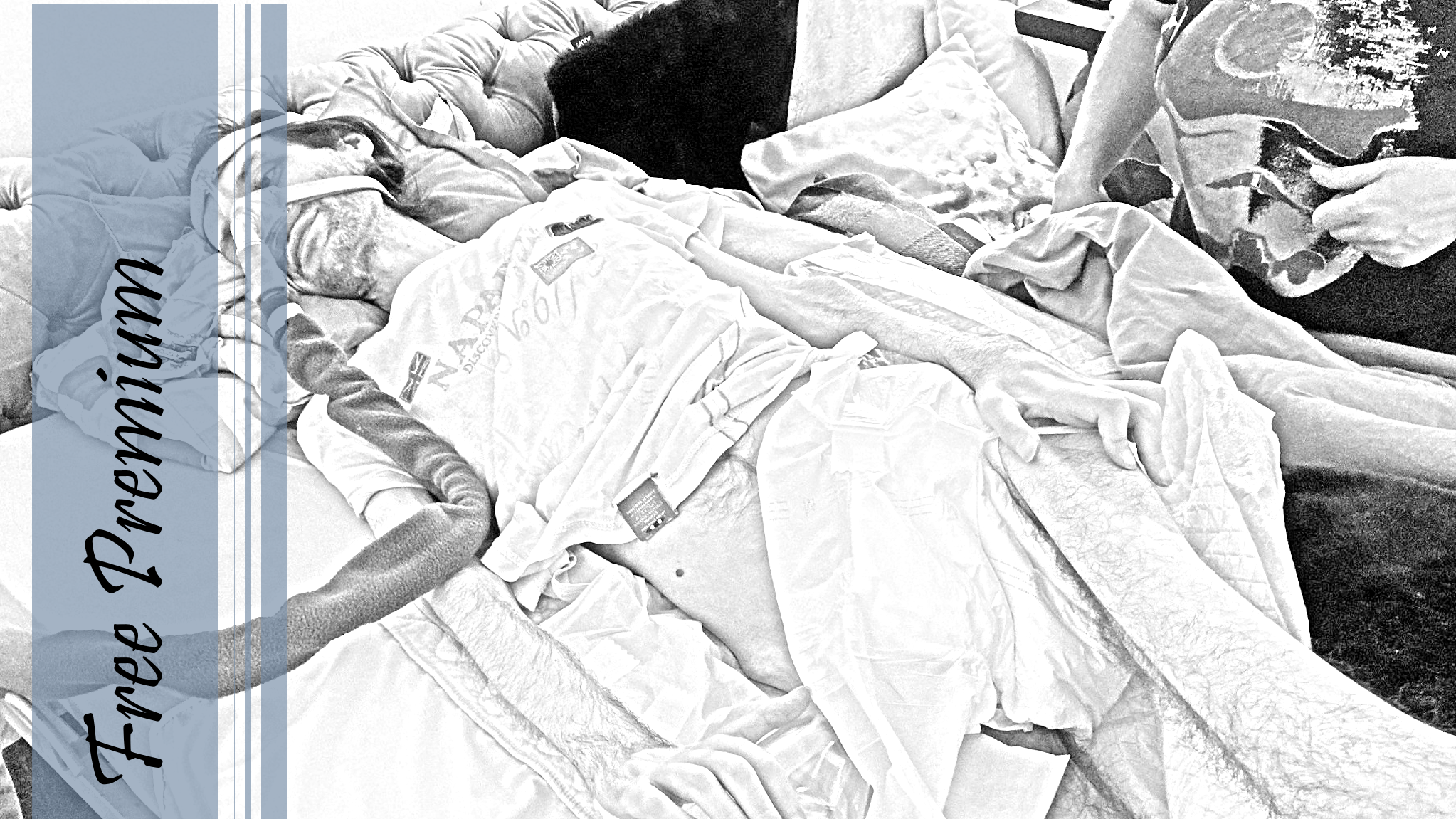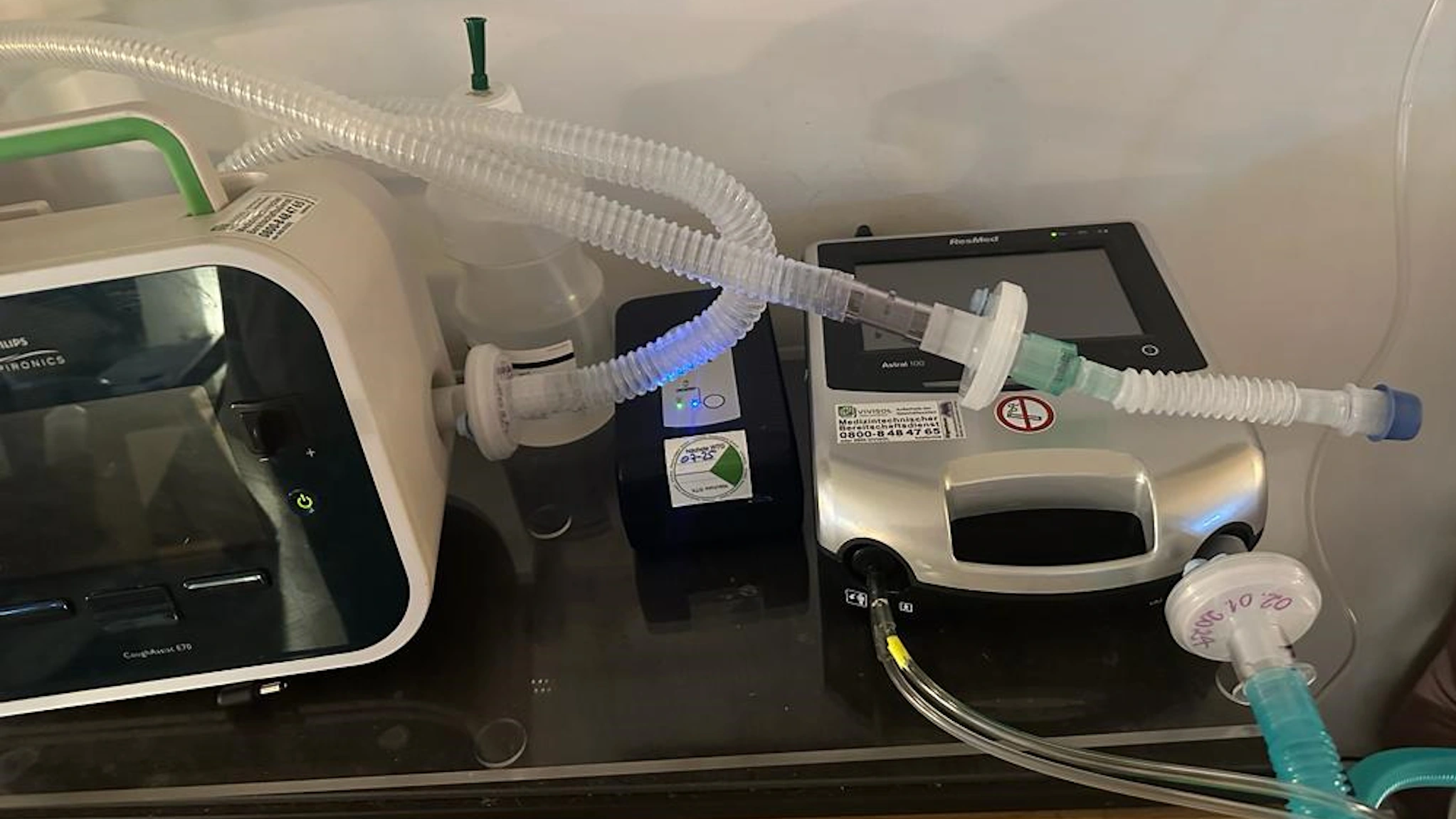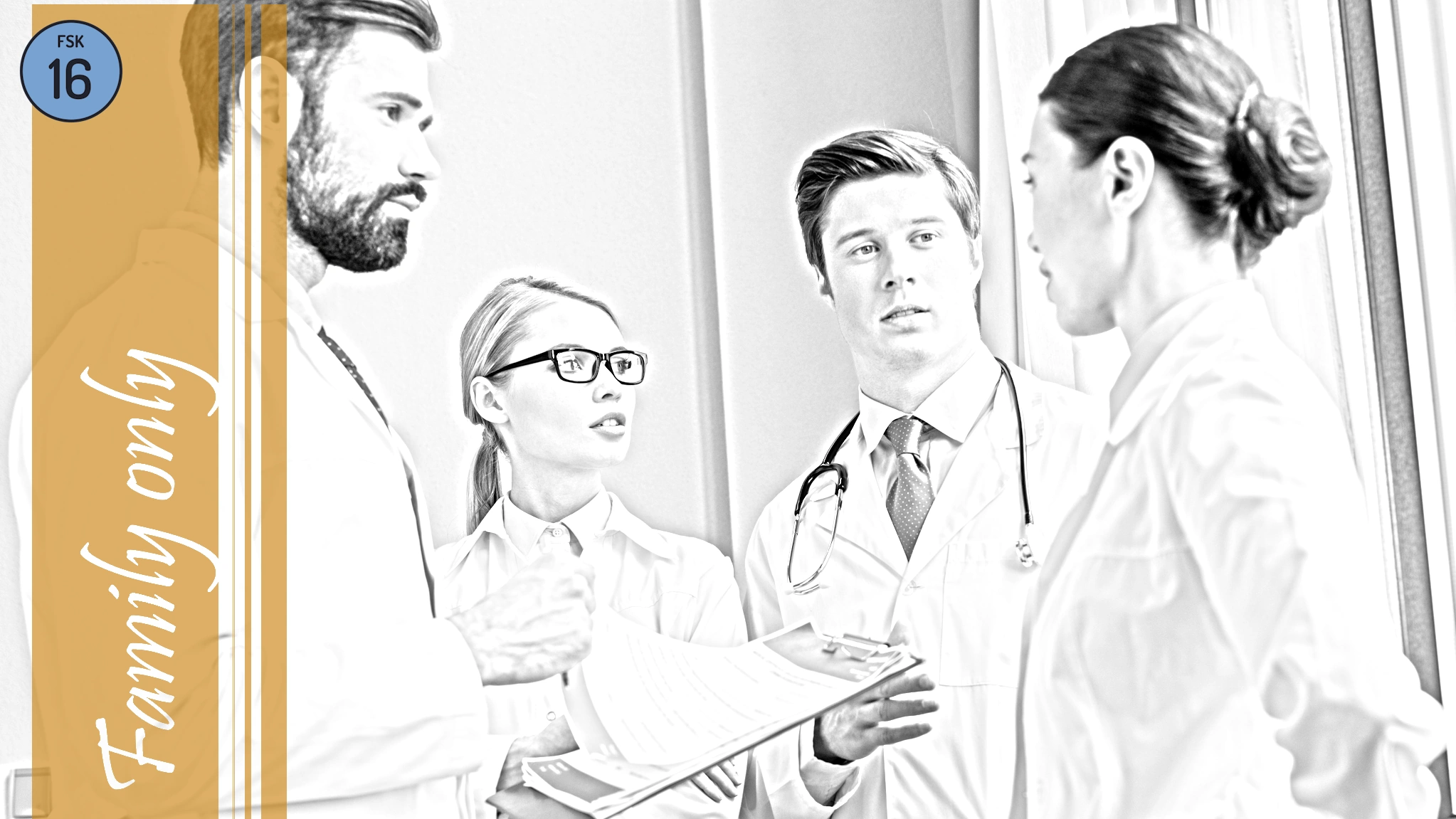The change from nose-to-mouth mask to nasal mask typically occurs:
- after sleeping
- After inhalation
- if I have to be suctioned (because of the otherwise missing overpressure, this is only possible with a nose mask on)
- when I panic under the "full face mask" again
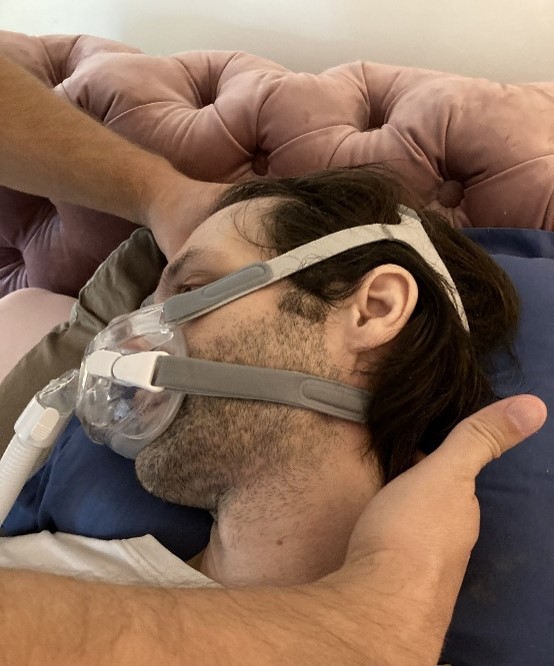
Here we go. I lie on my back as usual with my head turned to the right.
Of course, you have cleaned the nose mask and have it ready with the straps open and not twisted.

You lift my head slightly and turn my head straight to the centre.
As with the other change, this is a position I don't like at all, but it doesn't help.

You lift my head slightly and turn my head straight to the centre.
As with the other change, this is a position I don't like at all, but it doesn't help.
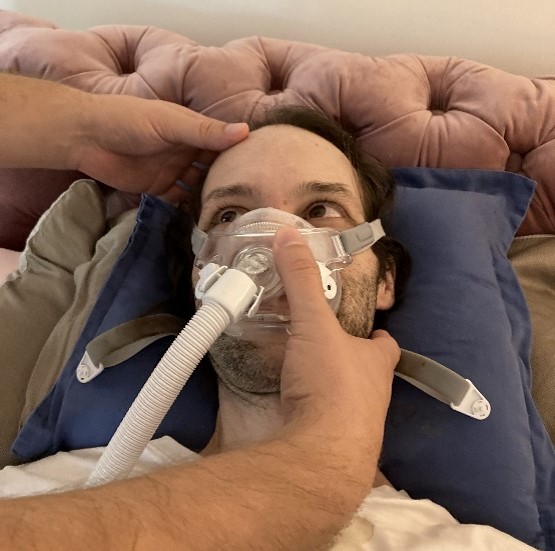
Similar to the other change, you now reach behind my head with one hand and continue to hold the mask to my face after you have loosened the lower straps.
You wait for my unmistakable eye signal that I am ready.
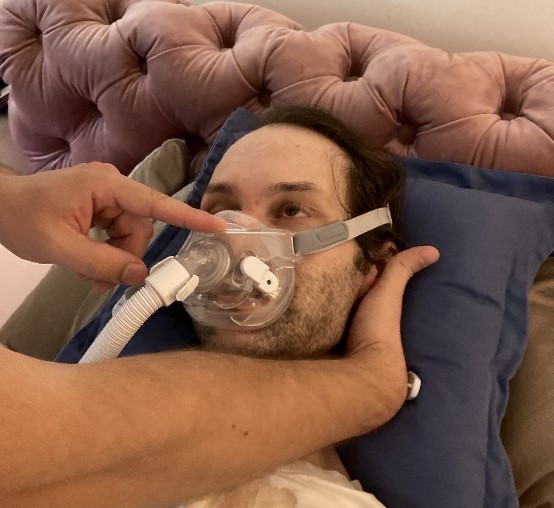
With one hand you hold the mask, with the other you lift my head.
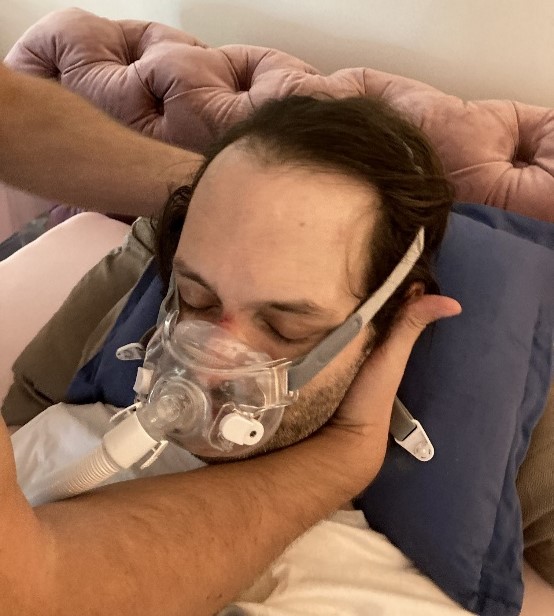
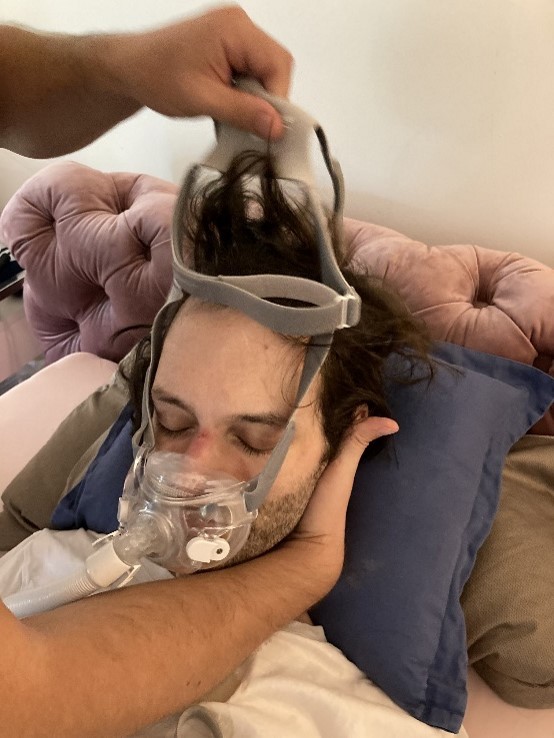
I hold my breath and close my eyes.
For you, this is - as with all other actions without a mask (shaving the moustache, combing the hair, washing the face, ...) - the sign that everything is good with me so far. As soon as I open my eyes again, it means I need air. And I need it now. My body has no buffer for shenanigans. When I open my eyes, please hold the mask to my face first and then we'll see. Thank you very much for this. ?
Now pull the headgear forward, starting from the back of the head. This is exactly the opposite of putting on the mask.
If you do it like this, it's really easy. The mask doesn't get stuck everywhere, especially on the nose. Because the mask simply slides down from the nose.

Put the nose and mouth mask aside for now.
Then take the part of the nose mask that goes on the nose in one hand and the headgear in the other.
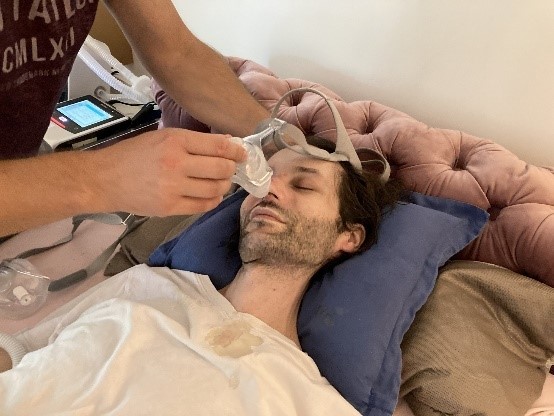
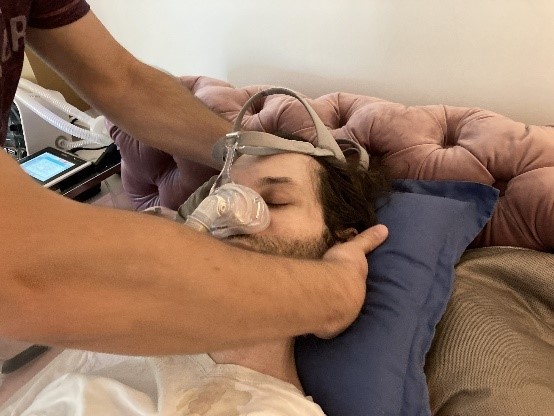
Place the mask as far as possible on top of the nose so that the nose mask is flush with the nose at the bottom and encloses the entire nose well.
Please note, it is a nose mask. Not a lip mask, not a mouth mask, not a tooth mask and not a muzzle either. You can't imagine all the things I've had to experience and go through.
What happens now depends on how my lungs are doing and how skilled you are at changing masks. If you are unsure or if I open my eyes, please reconnect the tube now, press the mask on my nose and let me catch my breath.
Otherwise, or rather then, you lift my head slightly and put the headbands back.
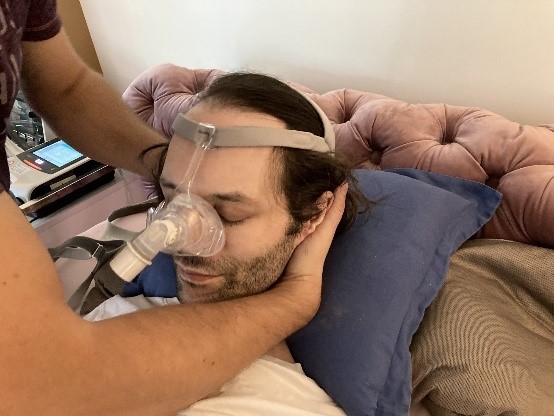
Pull the headbands straight. Always make sure that the mask stays properly on the nose where it belongs.
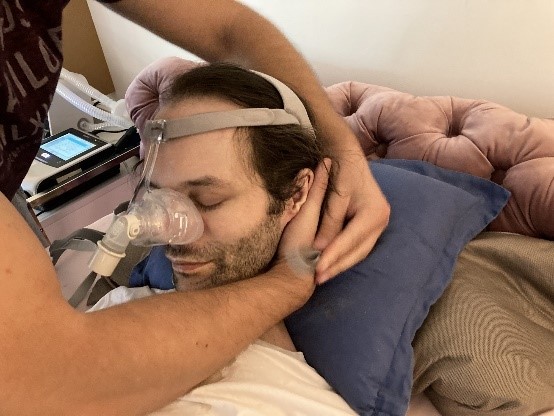
Next, bring the lower bands forward.
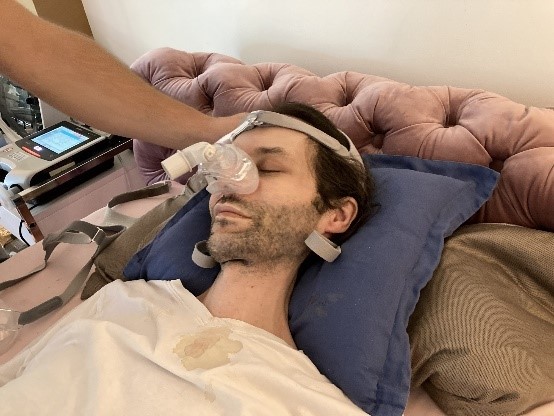
When the tapes are in front, you tuck my head back in.
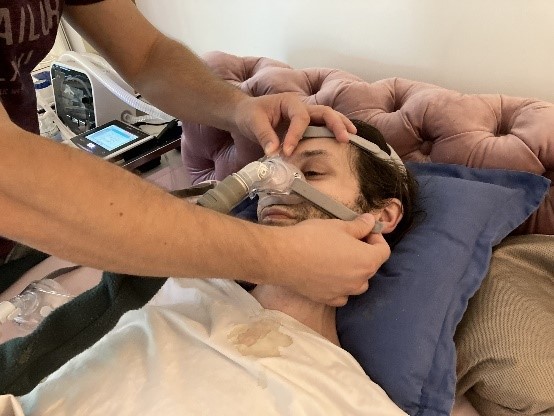
Now comes the moment I'm eagerly waiting for. Now, at the latest, you reconnect the hose.
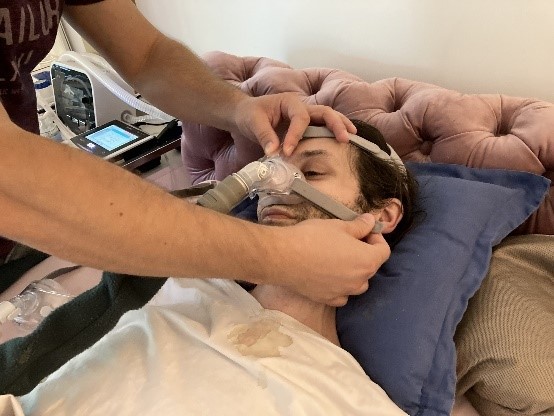
Now that I can breathe again, I have all the time in the world to make everything beautiful.
The first thing you do is put the ribbons back in place.
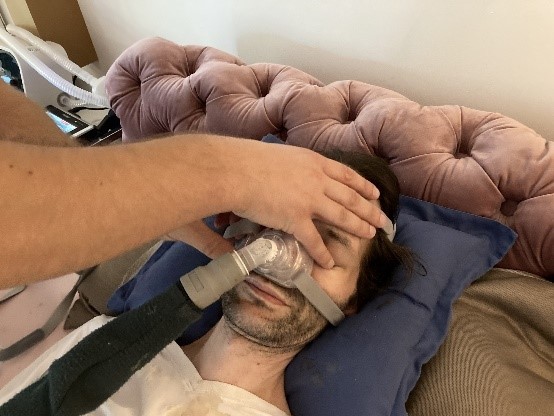
Then you can straighten the mask if necessary.
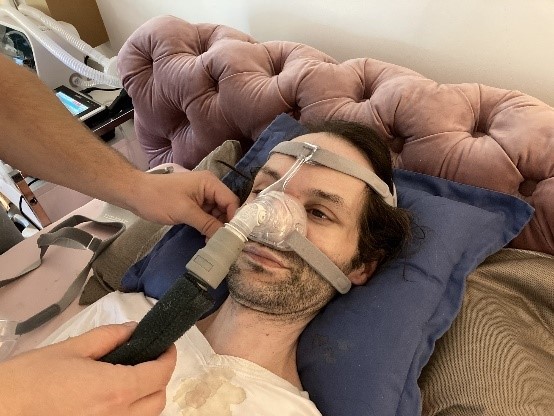
Check the fit of the lower straps. You will almost always have to push them up with the mask because, as is so often the case, the mask is on the lip instead of the nose.

If everything fits, turn my head back to my right side, as usual. Because when I lie on my back and look up, I have trouble breathing, I can't swallow and secretions run unchecked into my lungs.

